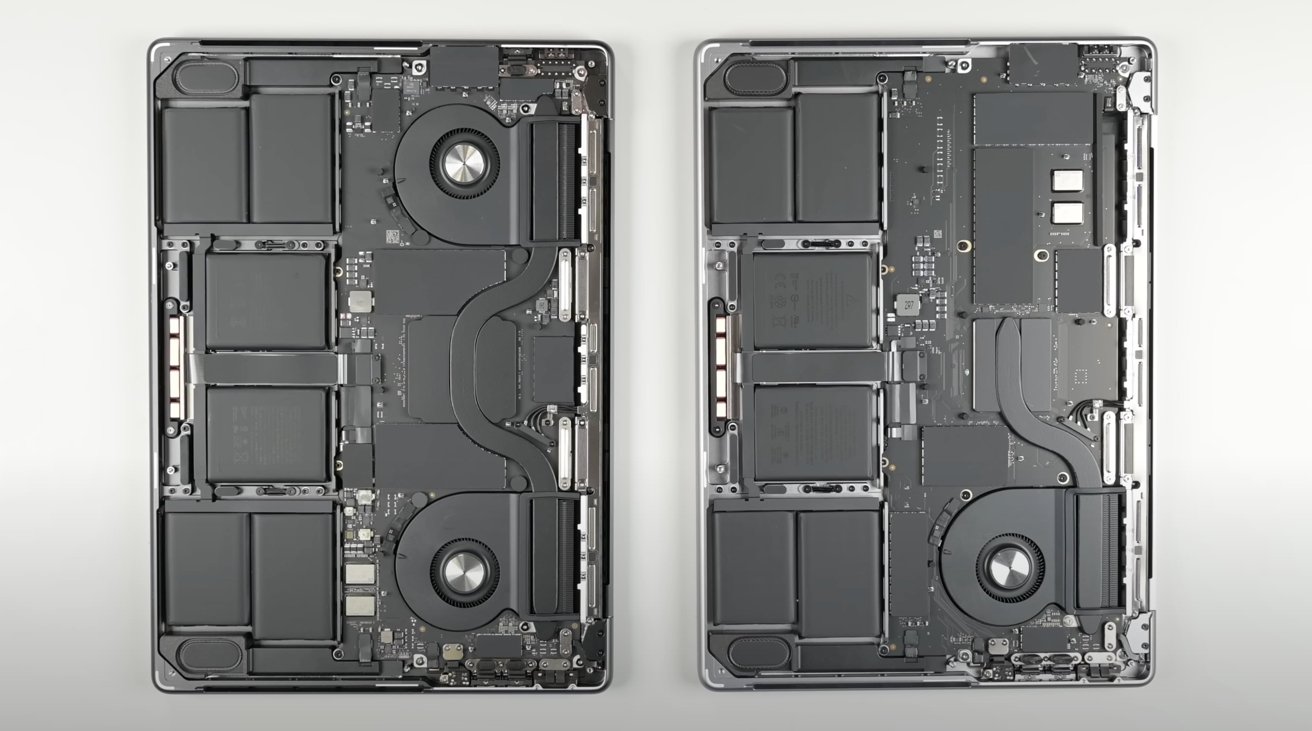A teardown of the 14-inch MacBook Pro with M3 chips reveals no real changes to the way it’s constructed for the M3 Pro model, but that the new Space Black coating is more interesting than first thought.
The ritualistic teardown and internal inspection of the new MacBook Pro has taken place, providing a way to learn about Apple’s considerations for product design. As a spec-bump update to the lineup, there’s unsurprisingly not that much new about the changed models.
Repair outfit iFixit looked at the M3 and M3 Pro versions of the 14-inch MacBook Pro in a video published on Friday. The eight-minute video shows x-ray images of the new models, as well as the disassembly process.
Initial x-rays show a big internal difference between the M3 and M3 Pro versions. While the M3 Pro has two fans for cooling down the chip, the M3 uses only one, along with a shorter heatsink.
Rather than let that empty space go to waste, the M3 expands the logic board into that area.
Taking off the cover and ignoring the fan change, the insides still consist of mostly modular sections, though one missing Thunderbolt port on the M3 is spottable.
With pull tabs in the usual spots for the battery, ZIF connectors and screws for the logic board, and screws in many other places, the MacBook Pro can be quickly taken apart. With the exception of the SD card reader and HDMI ports being modular, most of the components could be feasibly replaced, albeit with the continuation of pairing issues.
The base M3 board is noted to have two flash storage modules, which theoretically eliminates the speed bottlenecks of the M2 Air, which had one.
On user repairs, it’s explained that switching the screens may not be something that owners can do, as an attempt resulted in artifacting that seemingly can only be fixed using Apple’s calibration tools, which are only used by Apple itself.
Other elements that are locked own include the Touch ID and lid angle sensors, which are paired to the logic board.
iFixit gives the new models a provisional “Repairability” score of four out of ten, on the expectation that parts and manuals will be provided via Self Service Repair channels.
Space Black changes
Apple’s anodization and etching process was drilled down on in a blog post, explaining how the new Space Black coating works.
Typical anodization adds a protective oxide layer to aluminum, creating a rough surface made of microscopic bumps. During the process, dyes can be added to introduce colors, but in the case of Space Black, it’s actually a very dark grey.
While the anodization bumps does diffuse light and help make the surface seem darker, helping deepen the shade of the dye used in the process, Apple takes an extra step to deepen the color.
By using etching, Apple increased the severity of the bumps to create an extremely uneven surface, diffusing light even more. With less light heading to the user’s eyes, the surface seems even darker than the dyed version.
The extra bumps may also be why the surface is now more fingerprint-resistant than usual. It’s reckoned that the increased pit depth and higher raised portions of the surface reduces the amount of actually touchable surface, minimizing the amount that comes into contact with the user’s hands.
While it cannot completely eliminate traces of fingerprints, the etching does help reduce the presence of prints in the first place.
This story originally appeared on Appleinsider

